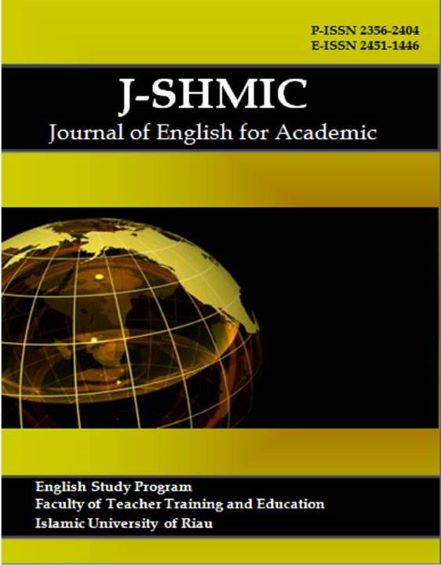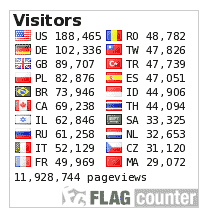Developing EFL Critical Reading Aids: Project-Based Learning Activities for Electrical Industrial Engineering Students
Keywords:
critical reading activities, MBKM Curriculum, Project-Based LearningAbstract
The Independent Learning and Independent Campus (MBKM) curriculum for vocational education provided learning experiences for students. However, the reading material conducted had not reached the curriculum target. Thus, this study aimed to develop critical reading material and worksheets based on the MBKM curriculum. The development procedure was designed in three stages: defining, designing, and developing for 3-D aids. The research resources employed were validation sheets for critical reading aids and semi-observation sheets to provide student activity during PjBL field trial. The results of this study were project-based learning (PjBL) used to construct English language learning aids for the syllabus and coursework units, including worksheets for critical reading. Hence, this learning aid could slightly enhance students' reading competence, which could lead them to have soft and hard skills as well as meet the MBKM curriculum target.
Downloads
References
Almulla M.A.L. (2020). The effectiveness of the project-based learning (pbl) approach as a way to engage students in learning. Sage openvolume 10, issue 3, july 2020. https://journals.sagepub.com/doi/epub/10.1177/2158244020938702
Amali, K., Kurniawati, Y., & Zulhiddah, Z. (2019). Pengembangan Lembar Kerja Peserta Didik Berbasis Sains Teknologi Masyarakat pada Mata Pelajaran IPA di Sekolah Dasar. Journal of Natural Science Integration, 2(2), 191-202.
Anderson, L. W. and Krathwohl, D. R. (2001). A taxonomy for learning, teaching, and assessing: A revision of Bloom's taxonomy of educational objectives. Allyn & Bacon. Boston, MA (Pearson Education Group)
Andreani, Sri. 2010. Modul reading III: Critical reading. Malang: State University of Malang.
Afriana, Jaka. (2015). Project-Based Learning (PjBL). Universitas Pendidikan Indonesia. Bandung.
Astawa, Ni Luh Putu Ning Septyarini Putri, Luh Putu Artini, Putu Kerti Nitiasih. (2017). Project-based Learning Activities and EFL Students’ Productive Skills in English Journal of Language Teaching and Research, Vol. 8, No. 6, pp. 1147-1155. DOI: http://dx.doi.org/10.17507/jltr.0806.16
Division of Teaching and Learning Office of Curriculum, Standards, and Academic Engagement. 2019. Project-based learning: Inspiring middle school students to engage in deep and active learning. New York. http://blog.ncue.edu.tw/sys/lib/read_attach.php?id=11950 (Accessed on 19 Januari 2019)
Farida, F & Nawafillah, NQ. (2019). The implementation of critical reading strategy for improving reading comprehension skill of Informatics Engineering students. Lintang Songo: Jurnal Pendidikan, Vol. 2 No. 2 Agustus 2019
Fragoulis, Iosif. (2009). Project-Based Learning in the Teaching of English as A Foreign Language
in Greek Primary Schools: From Theory to Practice. English Language Teaching. Vol 2(3)
Foss, Patrick, Carney, Nathaniel, McDonald, Kurtis and Rooks, Matthew. (2008) Project-Based Learning Activities for Short-Term Intensive English Programs. The Philippine ESL Journal: Volume 1 Page 57-76
Grant, M.M. (2002). Getting a grip of project-based learning: Theory, cases, and recommendation. North Carolina: Meridian A Middle School Computer Technologies. Journal Vol. 5.
Lestari, Tutik. (2015). Enhancing students’ basic competence through project-based learning model. Yogyakarta: Universitas Negeri Yogyakarta
Marwan, Ardi. (2015). Empowering English through Project-Based Learning with ICT. TOJET: The Turkish Online Journal of Educational Technology – October 2015, volume 14 issue 4
Permendikbud. (2020). National Standard of Higher Education. Jakarta: Kemendikbud
Pirozzi, Richard. (2003). Critical reading, critical thinking. New York: Addison Weasley Educational Publisher Inc.
Politeknik Negeri Madura. (2022). Visi dan Misi. https://www.poltera.ac.id/info-box-2/ (diakses pada tanggal 22 Januari 2022 jam 23.54)
Rohmah, G.N. (2018). Students’ problems, strategies and reflections. J-ELLiT (Journal of English Language, Literature, and Teaching Vol.2 (1). http://repository.uin-malang.ac.id/5977/1/5977.pdf#
Yu Jinhong. (2015). Analysis of Critical Reading Strategies and Its Effect on College English Reading. Theory and Practice in Language Studies, Vol. 5, No. 1, pp. 134-138, January 2015 ISSN 1799-2591http://dx.doi.org/10.17507/tpls.0501.18
Wang, C & Gierl, M.J. (2011). Using the attribute hierarchy method to make diagnostic inferences about examinees’ cognitive skills in critical reading. Journal of Educational Measurement Summer, 48(2): 165–187
Published
How to Cite
Issue
Section
Copyright (c) 2024 Khulaifiyah Khulaifiyah, Milawati, Suparti

This work is licensed under a Creative Commons Attribution-ShareAlike 4.0 International License.
This is an open-access article distributed under the terms of the Creative Commons Attribution-ShareAlike 4.0 International License which permits unrestricted use, distribution, and reproduction in any medium. Users are allowed to read, download, copy, distribute, search, or link to full-text articles in this journal without asking by giving appropriate credit, providing a link to the license, and indicating if changes were made. All of the remixes, transform, or build upon the material must distribute the contributions under the same license as the original.











